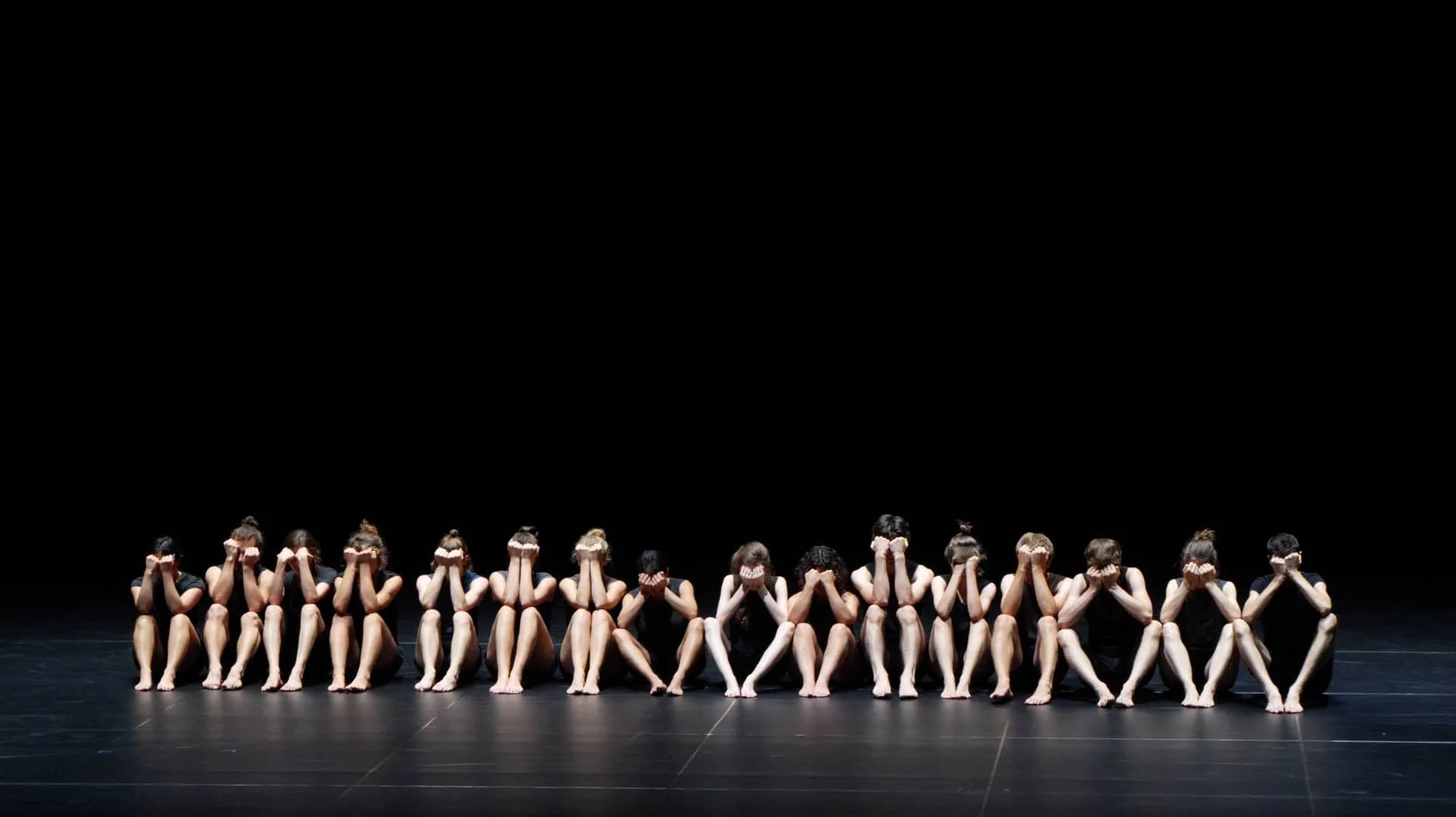
collective jumps
by isabelle schad & laurent goldring
In “Collective Jumps” the questions in the foreground were: What is machine and what is body? And what mechanisms account for their similarities? How can the individual dive into the bigger whole, disappear into it without losing a sense of self? How can the group become an organ made out of many different, individual extremities? How can collectivity be understood as a source of enrichment for each individual rather than a loss of self?

Konzept und Choreografie: Isabelle Schad in Zusammenarbeit mit Laurent Goldring
Performance und Tanz:
Juan Corres Benito, Frederike Doffin / Daniella Kaufmann, Hana Erdman, Naïma Ferré, Jasmin İhraç, Przemysław Kamiński, Roni Katz, Mathis Kleinschnittger, Inna Krasnoper, Zwoisy Mears-Clarke, Lea Moro, Benjamin Pohlig, Julia Rodriguez, Claudia Tomasi, Nir Vidan, Sunniva Vikør Egenes
Theoretische Begleitung: Gabriele Wittmann
Sounddesign: Damir Šimunović
Licht: Mehdi Toutain-Lopez
Kostüme: Lèa Girod
Lichtobjekte: Elias Macke
Produktionsleitung: Heiko Schramm
Assistenz: Angela Millano
Collective Jumps
(Upon reading Hannah Arendt: On Revolution)
’The group’s body is made out of many. We exercise practices that have the potential to unite instead of individualise. We understand these practices as a relationship to oneself and to one another, as a pathway. These practices are biological ones, cellular ones, energetic ones. We look at freedom in relation to form: to form that is made of and found by an inner process and its rhythms. Rhythm creates the form. Therefore, there is multitude, multiplicity, subjectivity, and variation: variation within repetition.
We look for equality in movement and for the end of hierarchy between body parts. Relations between body parts are like relations between people within the group. We play and distort in any kind of way. We differentiate synchronicity from synchronisation. We understand synchronicity as the moment when things fall together in time, a phenomenon of energy. We borrow floor, formation, and holding patterns from other communally practiced forms, such as folk dance or Eastern body practices. We relate resistance to questions of rhythm. We relate protest to questions of organisation and exercise. We look at the aesthetics of representation and the kind we are trying to resist. We look at the aesthetics of representation as a political practice. Could the creation of an infinite, unified, monstrous body possibly become a site of resistance? Could the body itself become a site of resistance, the body of a dancer?’
(I. Schad)